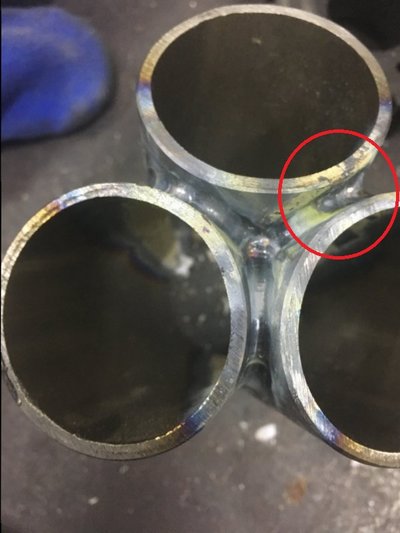Don't worry about that, your English is better and easier to understand than many British peopleSorry friend my English is not very good
The weld colours in those pics aren't silver, at least what's meant when people refer to 'silver coloured titanium welds'The 2.5-3mm welding look fine, the color silver and I don't hear the cracking..
A chart of Ti weld colours nicked from a google images result for 'titanium weld colour' (https://www.millerwelds.com/resources/article-library/titanium-101-best-tig-gta-welding-practices is the article it's from)...

Silver, when talking titanium welds, means there is no heat tint because the hot weld was protected from oxygen and nitrogen in the atmosphere as it cooled. The weld needs to be protected by shielding gas until it's cooled to below 500ish °C as titanium will happily absorb nitrogen, oxygen from the air at high temps and become embrittled. This is usually done by using large gas lenses and limiting weld lengths (pausing to allow the weld to cool) when trailing purges or welding chambers are not available or practical but heat input remains very important... need to keep a really short arc length and balance amperage with travel speed to keep heat input low
Fig 8 in the above chart shows the other extreme of a chalky white deposit which is sooooo heavily oxidised the surface is now titanium dioxide. The area i've circled in red

is one of several showing signs of this along with a yellow chalky scale which is a mix of nitrides and oxides. Here's an example i did years ago which is the back of a weld on a scrap of Ti
This is basically the titanium equivilant of a 'coked' or 'sugared' stainless weld... the damage goes deeper than the surface and in many cases the part is pretty much scrap unless it's a piece of artwork or garden furniture etc
It's not a good choice for a turbo manifold. Or any car exhaust manifold reallyI want try work with Titanium because it herd and light, I think it's good for turbo manifold.
Stuff like 304L or 316L stainless has a maximum service temperature of around 870 - 925°C (intermittent - continuous)*
Grade 2 titanium on the other hand has a max service temp in air of 425 - 540°C according to most data sheets which is significantly lower than exhaust gas temps. Grade 5 Ti is even worse despite being stronger/harder, max service temp of 350°C in air according to http://www.matweb.com/search/datasheet.aspx?matguid=a1fc12bc5d04434a8e617a745f46624b
There are a few exhaust specific grades of Ti about like TIMET XT or Kobe 1.2ASN which don't fall apart quickly at high temps but judging by how prone Ti exhaust stuff is to fatigue cracks (based on commercially made exhausts i've repaired which accounts for most of the Ti welding i do) there's little margin for error for the fabricator i.e. any welding flaws will be punished by cracks sooner rather than later
* At the temperatures it has to endure for a turbo manifold most of its 'strength' is lost, creep_strength. Flavours of stainless with more carbon in them have better creep strength at high temps but don't like being heated and cooled constantly, carbide precipitation. One solution to carbide precipitation are 'stabilised grades' like 321 stainless which allows thinner wall tube and thus some weight saving or more reliability. The downsides of 321 exhaust bits is cost but if/when money is less important than saving weight the materials of choice for exhaust manifolds are nickel super alloys, typically inconel 625. They retain their strength to insanely high temps so extremely thin wall tubing can be used






